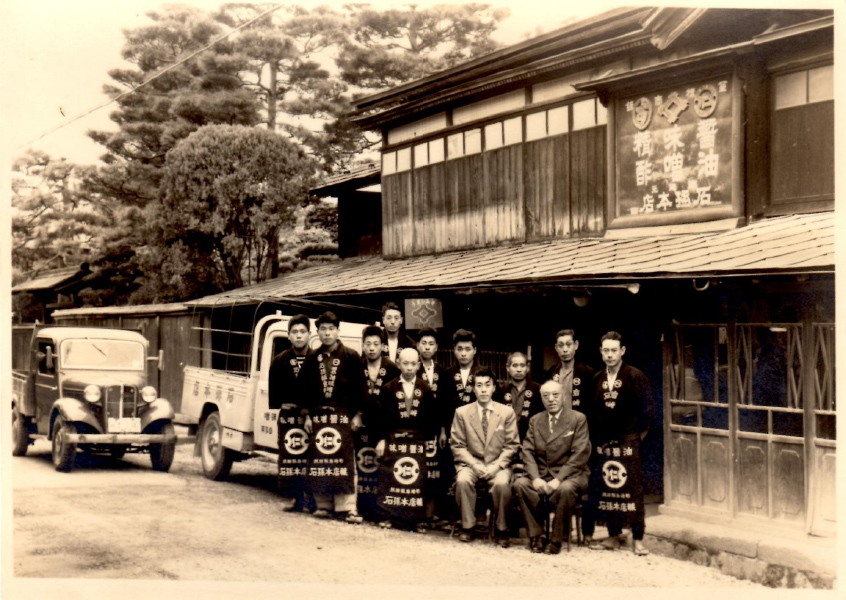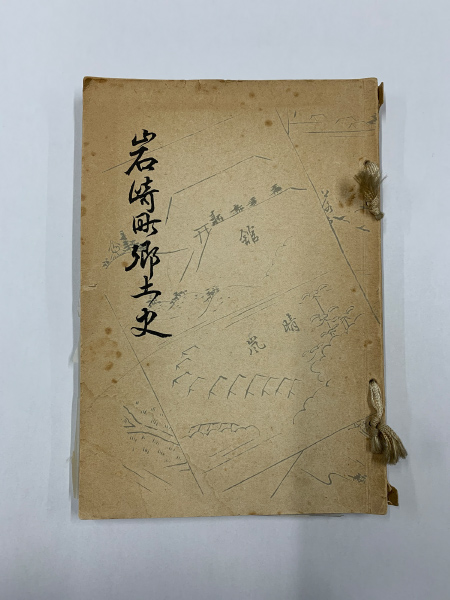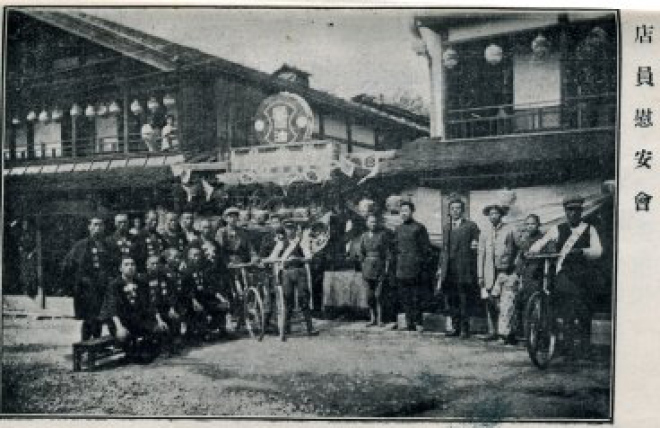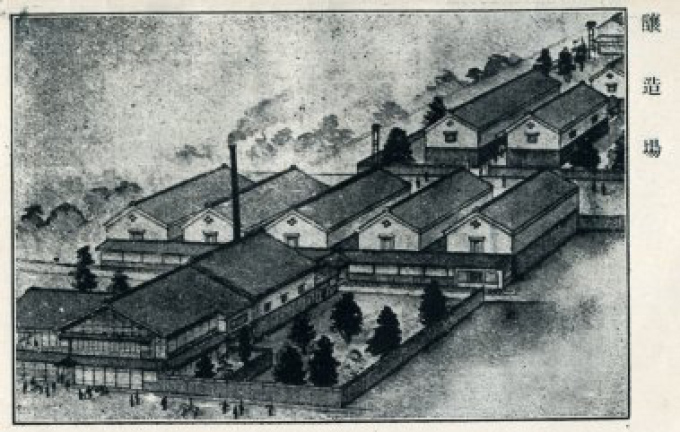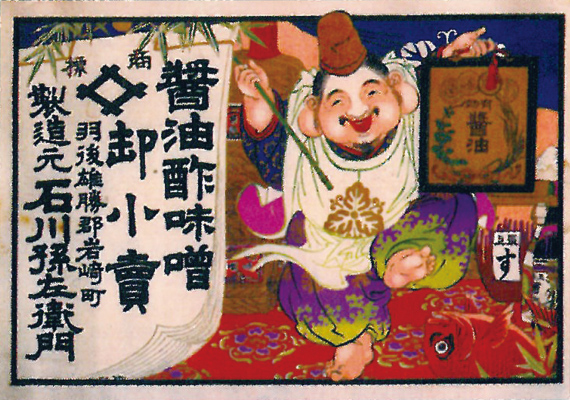蔵の歴史と製法
History & Production method
History & Production method
石孫本店の名前の由来は、初代から代々石川孫左ヱ門を襲名してきたことから石川の「石」と孫左ヱ門の「孫」をとって「いしまご」、「石孫本店」と呼ばれてきたことによります。現在の当主で六代目となります。「岩崎町史」には「肝煎り石川平兵衛の叔父にあたる初代石川孫左ヱ門が弘化二年(1845年)に醤油醸造を始めた」と記載されていますが、大正時代のパンフレットには「石孫本店の創業は安政2年(1855年)」となっていることから、石孫では創業を安政二年とし爾来味噌醤油醸造を生業として今日に至っています。創業時とほぼ同じ手造りの仕込み方法を継承しながら、地場産原材料にこだわった造りを続けています。秋田県産原料のみを使用し、麹蓋での麹づくりや木桶による熟成を行っている蔵元は全国でも希少となっていますので、醸造文化を守り継承することを家訓としながら、国登録有形文化財の内蔵や仕込み蔵をはじめ母屋などの歴史的建造物を保存活用し、「昔ながらの味噌醤油屋の風情」を後世に残すよう努めて参ります。
According to records within the company, the Ishimago factory started business in 1855. However, it has also been suggested through records of the local area, that the first known owner of the factory, Mr Ishikawa, started brewing soy sauce on this site in 1845. Although we can`t be sure of the exact start date, the production of soy sauce and miso has continued until today using the traditional methods that were used during that early time. The standards that were instituted at the forming of Ishimago are still respected today; we are careful in our selection of locally cultivated ingredients and ensure that all of the ingredients used in the making are produced within Japan, including the making of the Koji Buta and the wooden barrels used for brewing, which is a rarity amongst breweries in Japan. We also have a devotion to protect the unique culture of our fermentation techniques. Our Uchigura and further five Kura storehouses are registered with the Japan`s national cultural properties, with whom which we cooperate to ensure that the buildings and the important national heritage remains for future generations.
受け継いできた「手づくり」
Traditional production method
Traditional production method
仕込みに使う蔵はそれぞれ独立した姿で並んでいるため、木桶に仕込む作業、木桶から移す作業は必然的に人の手が中心になります。醤油も味噌も、蔵の中に鎮座する三十石(5・4kℓ)もの巨大な木樽がいっぱいになるまで、蔵人が担いで何度も何度も往復します。傍目には効率の悪い作業に見えるかもしれません。しかし、これが幸いにも米や大豆、小麦の状態をいつでも肌で感じながら作業を進めることになり、伝統製法を守る大きな要因になっているのです。
私たちの造り出す製品は「生き物」であると考えております。「生き物」は最先端の機械をもってしても制御できないことがあります。自然の力を借りながらも蔵人が五感を研ぎ澄まし、惜しみなく手をかけて造り出す…。だから、石孫では胸を張って『本物の手づくり』と言えるのです。
Because of the natural different layouts of the Kura warehouses that store the fermenting barrels of miso and soy sauce, the work of filling, stirring and transferring inevitably involves the hard work of human hands. Both the ingredients and final products of soy sauce and miso are repeatedly carried by the brewers until the huge wooden barrels of 30 stones (5.4kℓ) that sits inside the kura warehouses are full. Our system may at first seem inefficient. However, unlike automating the process, we can always keep a closeness to our product to feel the condition of rice, soybeans, and wheat with our hands and through our senses. This is the major factor in continuing the traditional manufacturing method and being true to our heritage. We believe that the products we produce are “alive” and this sensitive and deeply nutritious life force may not be controlled with even the most advanced machines. While borrowing the power of nature, the brewers sharpen their five senses and work generously to harness and protect what mother nature offers. That is why Ishimago products are proud to be truly handmade.
登録有形文化財 石孫本店の蔵
Registered cultural property
Registered cultural property
当店の蔵は、明治大正の建築様式の変遷が分かることから「国登録文化財」として登録されています。最も古い内蔵は、明治十六年(1883年)建造の文庫蔵で、腰壁にレンガを積むなど洋風の意匠が特徴です。
図の中央部分、五つ並んだ蔵は建設当時から現代まで仕込みの場として使い続けています。
そのうち、一番右の醤油醸造蔵であった一号蔵。平成二十三年(2011年)三月十一日、東日本大震災の際に、稀に見る豪雪による重みと、激しい揺れに耐えきれず全壊。その隣、二号蔵を改築し、新たな醤油蔵として再生しました。
道路に面して並ぶ醸造蔵四棟は、醸造業で栄えた旧岩崎町の街並みを今日に伝えています。
Our Kura storehouse is registered as a “nationally registered cultural property” because the building is representative of the changes in the architectural style of the Meiji and Taisho eras. Our oldest Kura, built in 1883 (Meiji era year 16) was used for storing written documents and features a western-style design such as a brick interior wall.
The five central warehouses have been used as a place for the preparation of miso and soy sauce from the time of construction to the present day.
Amongst these five storehouses, to the furthest right of the site, is the original soy sauce brewery. On March 11, 2011, the Great East Japan Earthquake struck, and the weight on the roof of the heavy snowfall that year and the severe shaking of the earthquake, destroyed the original soy sauce Kura. Next to the site, we rebuilt the second, Nigokura, and regenerated it as the main new soy sauce brewery. The four brewery warehouses lined up facing the road, illustrate to us today how well Iwasaki town flourished in the brewing industry during the Meiji and Taisho eras.
- 内蔵(文庫蔵)Uchigura
(Kura building inside a property) - 座敷Zashiki
(living area) - 蒸缶(むしかん)Mushi Kan
(apparatus for steaming soy beans) - 味噌 麹室(こうじむろ)Miso Koji Muro
- 味噌 熟成蔵(じゅくせいぐら)Miso Jyukusei Gura
(the Kura where Miso is left to ferment) - 麦炒り機Mugi Iriki
(Roasting barley machine) - 醤油 麹室(こうじむろ)Soy Sauce Koji Muro
- 醤油 熟成蔵(じゅくせいぐら)Soy Sauce Jyukusei Gura
(the Kura where soy sauce is left to brew) - 精製蔵(せいせいぐら)Seisei Gura
蔵付き酵母「いしまご恵比寿酵母
The yeast of the brewing house
The yeast of the brewing house
フルーティで香り高く、深い味わいを生み出す石孫の蔵付き酵母。石孫の味噌・醤油を醸してくれている蔵付き酵母は一六〇年以上ずっと育んできた独自のもの。長年微生物の仕事をしてきた研究者の方が「初めて見た」と驚いたほどの個性派です。
石孫のシンボルとしている大正時代に配布した石孫の「引き札」(広告)に描かれた恵比寿さま。酵母にも福々しい繁栄を祈って「いしまご恵比寿酵母」と名付けました。
The yeast which resides in our kura has a fruity, fragrant and deep flavor. This yeast, which brews Ishimago’s miso and soy sauce, is a unique product that has been developed for over 160 years; researchers who have been working on microorganisms for many years are often surprised to see it for the first time. As the symbol of Ishimago, our yeast culture has been attracting customers since the Taisho era. The yeast was named “Ishimago Ebisu Yeast” after the god of fortune, Ebisu, in the hope of ensuring the continuous prosperity of our operations.






